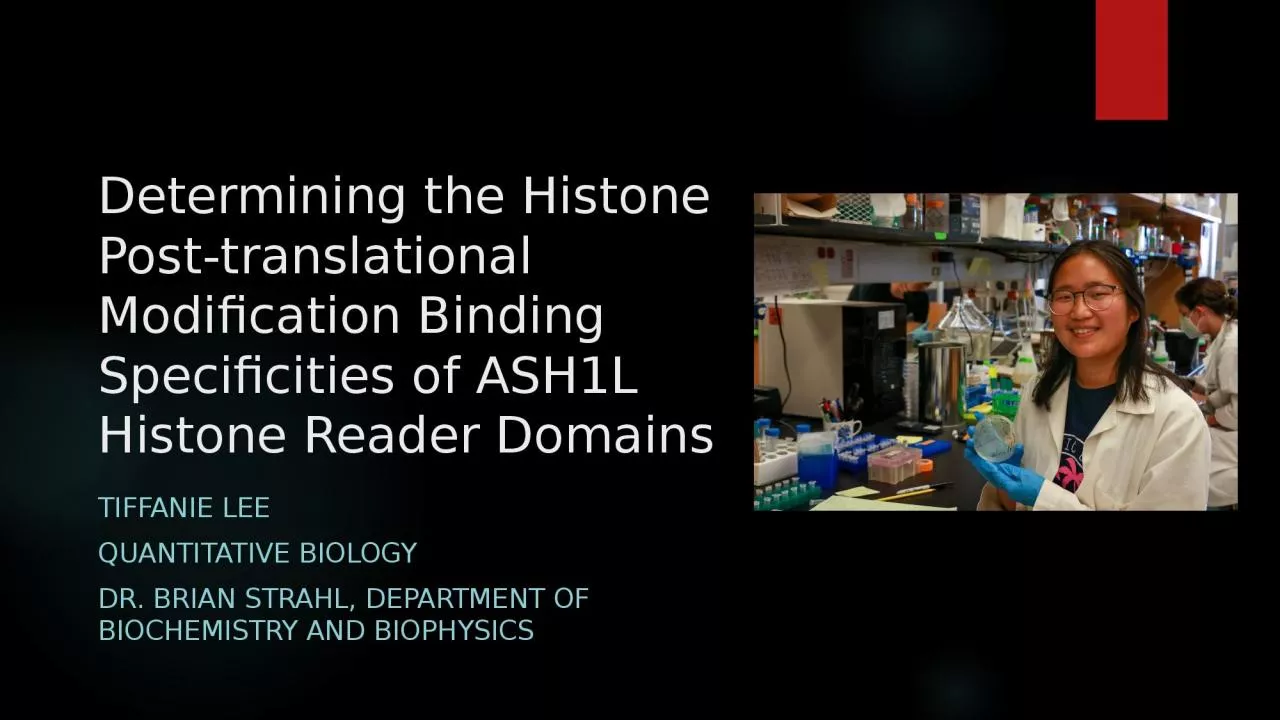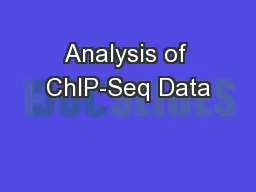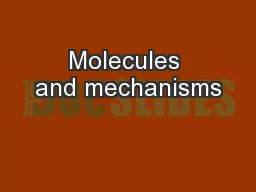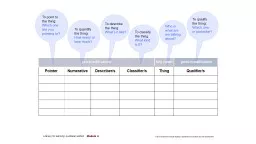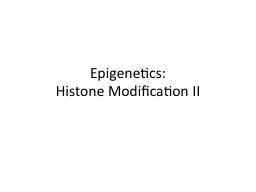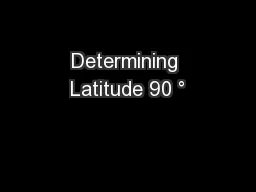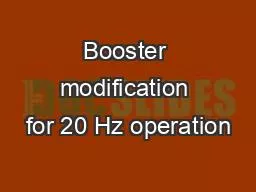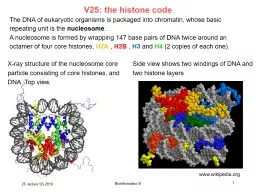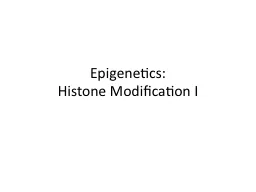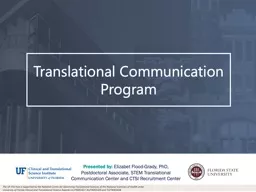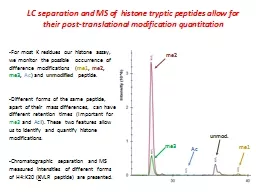PPT-Determining the Histone Post-translational Modification Binding Specificities of ASH1L
Author : okelly | Published Date : 2023-07-18
Tiffanie Lee Quantitative Biology Dr Brian Strahl Department of Biochemistry and Biophysics How does ASH1L read chromatin What histone reader domains are involved
Presentation Embed Code
Download Presentation
Download Presentation The PPT/PDF document "Determining the Histone Post-translation..." is the property of its rightful owner. Permission is granted to download and print the materials on this website for personal, non-commercial use only, and to display it on your personal computer provided you do not modify the materials and that you retain all copyright notices contained in the materials. By downloading content from our website, you accept the terms of this agreement.
Determining the Histone Post-translational Modification Binding Specificities of ASH1L: Transcript
Download Rules Of Document
"Determining the Histone Post-translational Modification Binding Specificities of ASH1L"The content belongs to its owner. You may download and print it for personal use, without modification, and keep all copyright notices. By downloading, you agree to these terms.
Related Documents

